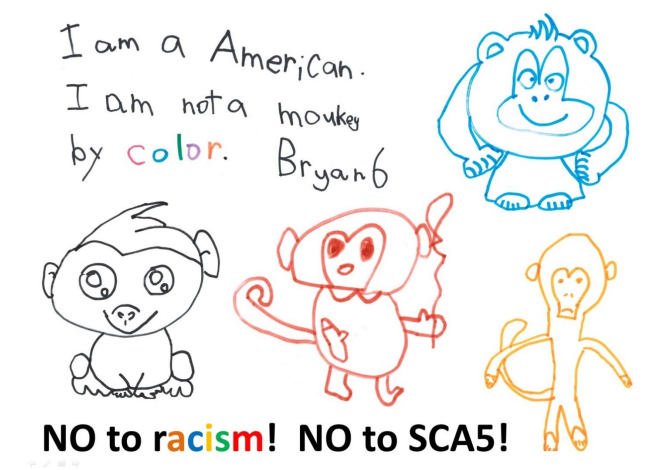
SCA5 — Senate Constitutional Amendment 5 that was recently tabled and then withdrawn in California — would’ve done one thing: repealed Prop 209 and restored the capacity for UC schools to employ race-based affirmative action among other considerations in making college admissions decisions.
Why is this necessary? Because since Prop 209 ended race-based affirmative action in California, admission rates for underrepresented minorities — Black, Chicano, Southeast Asian American, Pacific Islander, and Native American students — plummeted by as much as 10% across the entire UC system, with some campuses experiencing an immediate admissions rate drop by as much as 30%; by contrast, Prop 209 has had a minute impact on Asian American admission rates, increasing it by a mere 0.4% immediately upon its passage.
Yet, a vocal minority of Asian Americans — predominantly Chinese Americans situated in Southern California — managed to get SCA5 tabled through an online petition and thousands of phone calls placed to Asian American elected officials. And, while the political clout it takes to kill a bill and send California Dems scampering back to their war rooms is impressive, the anti-SCA5 rhetoric has been based on some pretty shocking untruths and misinformation, much of it originating out of conservative PACs and ethnic news.
The most misinformed, ahistorical, and flat-out bizarre rhetoric arrives in the form of anti-SCA5 opponents who in the last two weeks compared the bill to bunch of stuff SCA5 are not like. You think you are ready, but you have no idea.
After the jump, here are the top 5 things SCA5 are not like.
1. … the 1882 Chinese Exclusion Act. (from a letter reproduced by the 80-20 Initiative)
The 1882 Chinese Exclusion Act did many things, that resulted in the near total exclusion of Chinese immigrants from China based predominantly on Yellow Peril fears. Not only were “skilled and unskilled labor” from China barred from entry, but the act further emphasized that Chinese migrants were ineligible for naturalization and US citizenship. The act, as well as its many anti-Asian successors, effectively halted virtually all immigration from many parts of Asia into the US for over fifty years, until 1965.
SCA5 is not like the Chinese Exclusion Act, because it does not close the doors of secondary education to Asian Americans based on race. Affirmative action would not bar all or most Asian Americans, or Chinese Americans in particular, from attending university; in fact the population of Asian Americans admitted to UC schools rose the greatest under affirmative action prior to Prop 209, and Asian Americans are still admitted at three times our national population size in most schools that still practice affirmative action.
Also, more to the details of the argument in the letter excerpted above, neither the 1882 Chinese Exclusion Act nor race-based affirmative action established race-based quotas for either immigration or college admissions, respectively. While the subsequently passed Magnuson Act did set a quota on Chinese immigration, this was intended as an explicit relaxation of the Chinese Exclusion Act. Quota-based affirmative action has not been practiced since 1978, when it was ruled unconstitutional by the Supreme Court; thus, SCA5 would not permit this sort of affirmative action to be practiced in California.
2. … Jim Crow laws.
Jim Crow laws were a series of local and state-wide laws throughout the states that codified racial segregation between Whites and their African American numbers. Racial segregation of everything from schools, to bus seating, to water-fountains, to lunch counters was established, and privately reinforced by social norms, as well as acts of violence and domestic terrorism committed by roving bands of vigilantes.
Thousands if not millions of men, women and children were institutionally terrorized by Jim Crow laws, that implicitly condoned acts of violence against their person in order to keep public spaces segregated and Black people disenfranchised as second-class citizens.
Meanwhile, I am unaware of any lynchings that have been committed in the name of affirmative action.
3. … Japanese American internment. (among other examples, a comment posted on the Pasadena Star, upvoted 22 times)
Executive Order 9066 was a presidential order that resulted in the forced relocation and detainment of thousands of Japanese Americans into prison camps, where they were housed under threat of death for years. The basis of internment was the misguided suspicion that Japanese Americans — and their parents who were at the time still racially ineligible for citizenship — were loyal to Japan in one of the most devastating examples of the ramifications of the Perpetual Foreigner stereotype.
There is no evidence of any kind that the motivation for restoring affirmative action has anything to do with fears of Asian American students on-campus, in general, or their national loyalties in particular.
4. … the Taliban shooting Malala in the head.
(Note: The image above is reproduced (with the original misspelling of “Taliban”) from a tweet linked through Facebook. Sadly, I saw the image but didn’t save it before it was deleted, so I had to recreate it from memory. )
How is SCA5 — a bill that would, by the way, promote the education of American children of underrepresented minority communities — not like terrorists who shot a girl in the head for attempting to go to school? Do I really even need to?
5. … missing Malaysian Air jetliner MH370.
…I don’t even.






